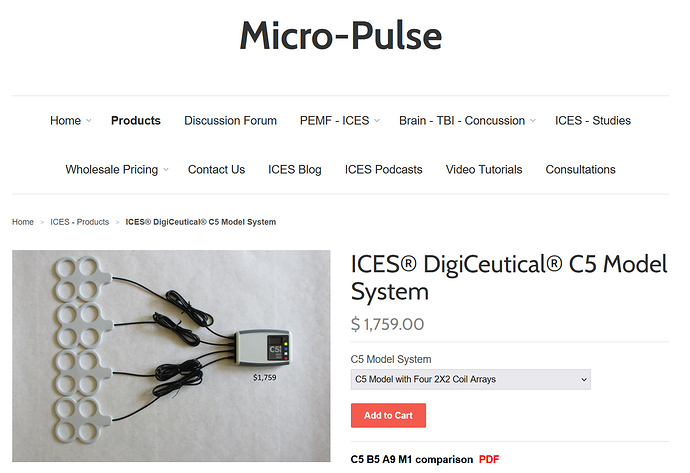Hi @deneen,
For the uses you are describing, I would be more inclined to use a C5 because it works with our 2x2 coil pad, which is designed to work well for placement under a pillow or mat. The M1 does have the same pulse patterns, but it does not generate enough power to drive the 2x2 coil mat as well.
As for “frequencies” for brain health, you will probably never find a specific answer that is reliably truthful and accurate. We honestly have very little reliable data for that. As a general guideline for PEMF, there is really no truth to the assertion “Frequency X treats or cures Condition Y”. I discuss this at length elsewhere on this forum. It boils down to a nuanced discussion of what we know, versus what we do not know.
But as a practical matter, to use PEMF you need to apply it with some pattern of pulses (“frequency”), after all, you have to pick one just to get the dang thing to run. So, what frequency do you pick?
You can think about what pulse patterns might be better than others, for a particular anatomic location, conditions of use, etc. But these fall into broad patterns, and you will need to make adjustments based on individual sensitivity and responsiveness to PEMF.
So, based on my personal experience, and a lot of feedback from others, a good place to start when using PEMF on the head/neck/face area is to avoid frequencies much above 25 or 30 pulses per second because this can be irritating or over-exciting to the brain.
Then, consider whether you want the cognitive effect to be relaxing or even sleep inducing, versus inducing awake alertness. Once again, there are broad patterns here, but individuals vary, so it is necessary to test, observe effects, adjust, repeat.
For me, this basically comes down to:
Desired cognitive state_____Try pulse pattern
Awake and alert_______Alpha Wave, Beta Wave 1, 2, or 3
Relaxation or sleep_____Delta Wave, Theta Wave, Schumann 1
So, you are wondering why I am talking about cognitive state and not “brain health”.
Because when you apply PEMF to the brain, there are two separate effects:
One involves the reduction of inflammation. This seems to work at all locations on the body.
The second effect is brainwave entrainment, where a frequency is thought to induce a cognitive state.
Using PEMF on the head, you get both effects. So, my opinion is:
Any “frequency” or pulse pattern seems help reduce inflammation and therefore contributes to tissue health, including brain health.
Certain frequencies may also induce cognitive states, so you are free to choose one that suits your needs at the time you are using PEMF.
Therefore, I choose a pulse pattern suited to the cognitive state appropriate for what I am doing at the time (sleeping, relaxing, solving complex technical problems, reading, etc.)
Then, I also gain from the effect that ICES-PEMF pulses at any frequency or pattern will also have the positive benefit to tissues of reduced inflammation.
